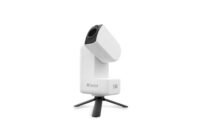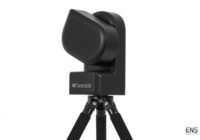- How do I choose an astronomy telescope? (Aperture)
- What are the 3 main factors that should be considered when choosing a telescope?
- A note from Derek about Dobsonian telescope.
- Size of objective lens for refractor telescopes
- How to read a telescope magnification? (focal length)
…– 30mm eyepiece
…– 25mm eyepiece
…– 13mm eyepiece - Comparison chart for your average magnification
…– Visual Mode: NGC 6888 (Crescent Nebula in Cygnus)
…– Visual Mode: Jupiter
…– Visual Mode: Full Moon - Astronomy Tools – Field of View Calculator
- How to read a Focal Ratio?
- Eyepiece calculator before you buy
- Telescope Shop (ENS Optical)
OOOO
How do I choose an astronomy telescope? (Aperture)
How do I choose an astronomy telescope? (Aperture)

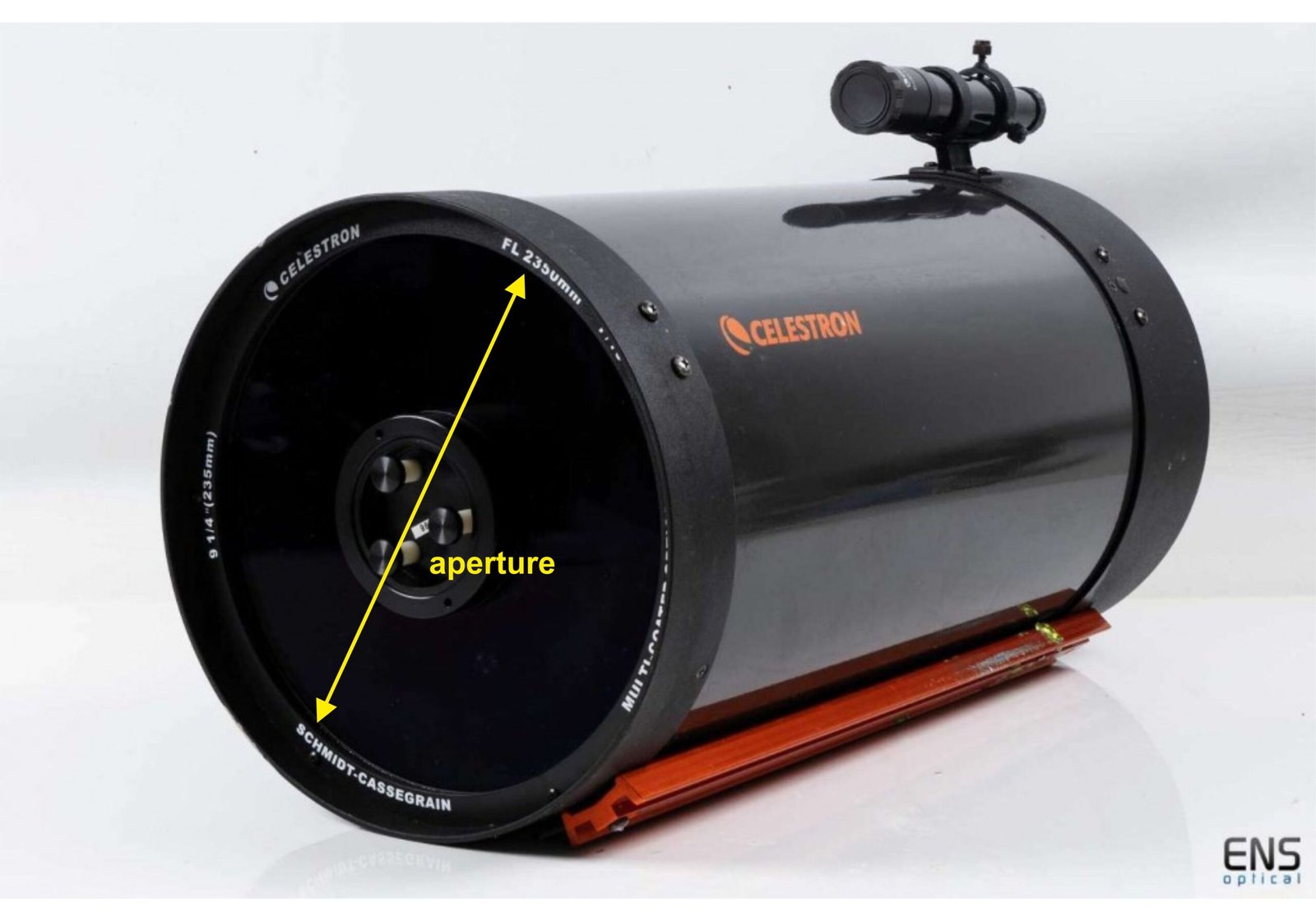
Aperture
- The aperture is the most important feature as the larger.
– this is the more light your telescope gathers therefore revealing fainter objects to your eye.
o - On the design of choice as most modern telescopes can be used for low and high power as well as imaging.
o - A telescope’s most important attribute is its size, meaning the diameter of its main mirror or lens.
o - The bigger the telescope, the more light it collects, which allows you to see more fainter objects.
o
O
O
What are the 3 main factors that should be considered when choosing a telescope?
What are the 3 main factors that should be considered when choosing a telescope?
oooo
Bigger is better, or is it?
- the main specification you want to consider when choosing a telescope is its aperture.
- the diameter of its main mirror or lens.
o
Three main factors for telescope
- 1) Types of telescopes – the diameter of its main mirror or lens.
- 2) Magnification.
- 3) Cost.
o
A note from Derek about Dobsonian telescope.
A note from Derek about Dobsonian telescope.


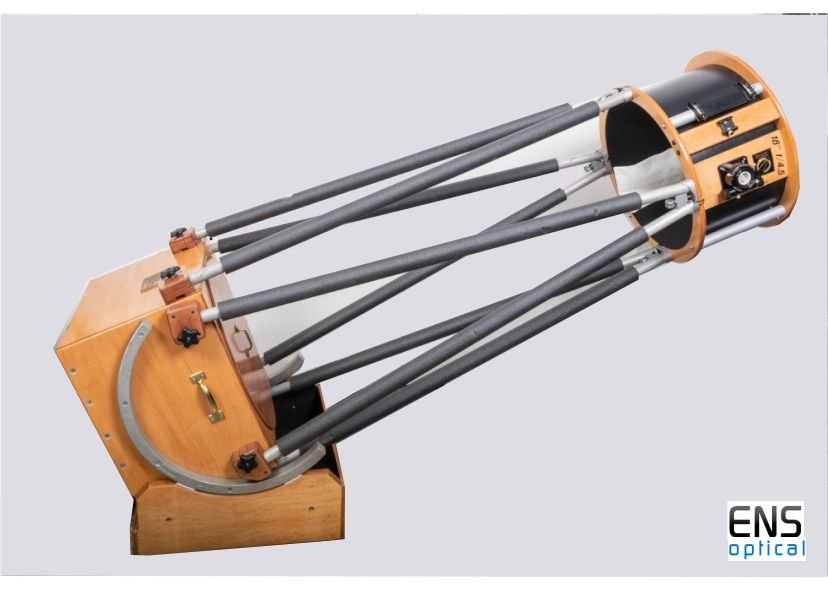
Dobsonian telescope
It could be a good-starting first telescope for anyone to start with.
O
- From 8″ to 10″ Dobsonians, this one is a far better product for just a little bit more money or for above the beginners and amateur, from 12″ to 20″ Dobsonians for above the beginners but it’s cost you more.
o - Adjustable tensioners, improved mount, dual-speed Crayford focuser, thumbscrew adjustable secondary, and upgraded eyepieces make this’s good.
o - This is probably the best telescope for deep space as long as you have the room, don’t mind lifting a little weight.
o - The Dobsonian design of maximized objective diameter combined with portability makes the design ideal for observing dim star clusters, nebulae, and galaxies (deep sky objects), an activity that requires large objectives and travel to dark sky locations.
o - Under light polluted skies, the moon, the planets, double stars, star clusters, are better seen with a 10 inch than a 4 inch.
o - The moon, the planets and many double stars are not affected by light pollution but the larger scope helps resolve finer details.
O
O
Size of objective lens for refractor telescopes
Size of objective lens for refractor telescopes
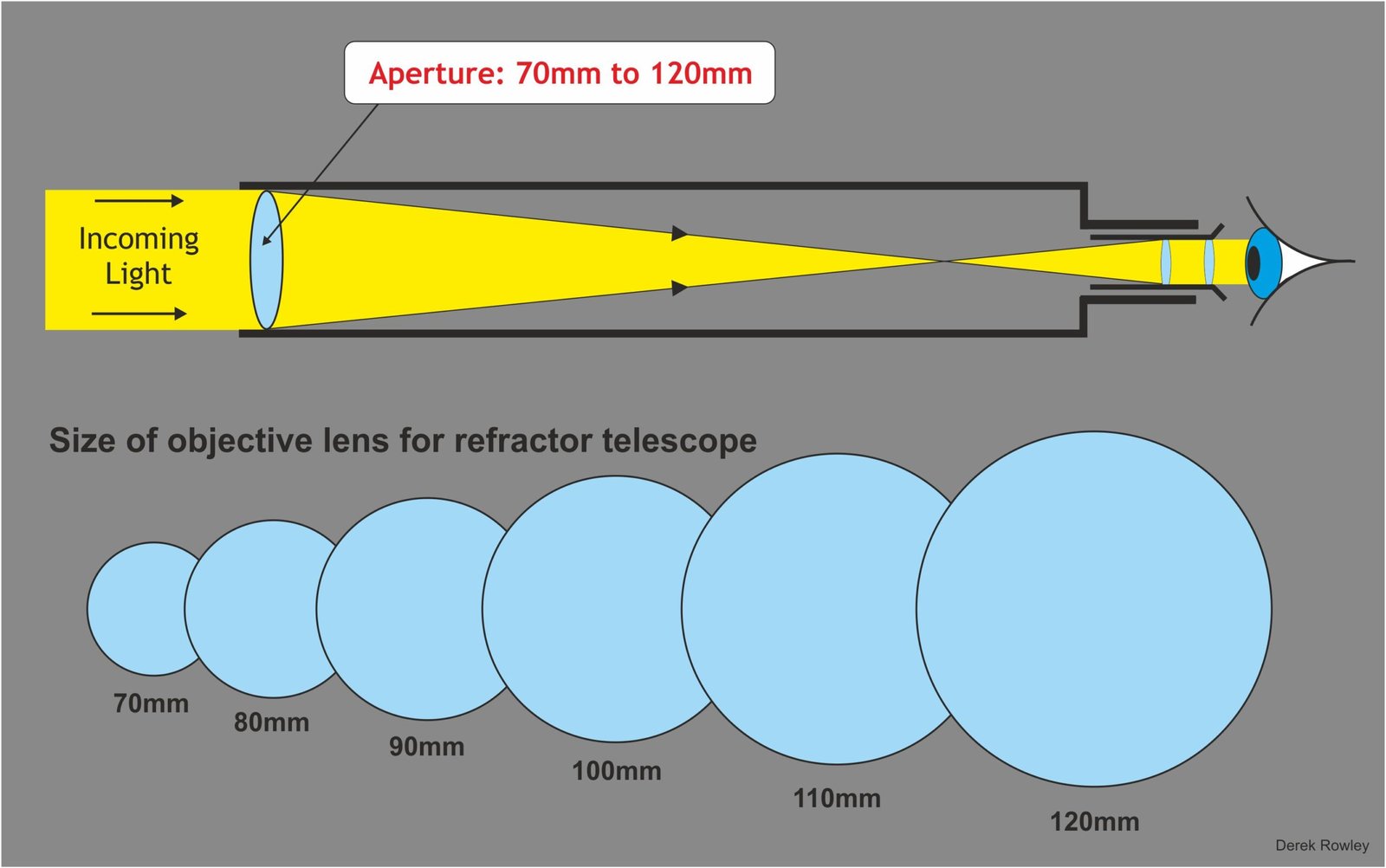
oooo
70mm
– the minimum size for good views.
– starts to show more detail on the planets.
O
80mm
– good size for detailed views of the planets.
– starts to show detail in the detail!
O
90mm
– excellent detail level on the planets and good views of all objects.
O
100mm
– bright planets like Jupiter, Saturn, and Mars shine bright in the 100mm reflector.
– even when viewing from urban locations with mediocre seeing conditions.
O
110mm
– the 110mm refractor excels in both deep-sky imaging and wide-field observing.
– the 110mm aperture, combined with extra-low dispersion (ED) FPL-51 glass.
– it offers great colour correction, as well as crisp images and fantastic views.
O
120mm
– all telescopes lose contrast, and refractors are no exception.
– the smaller the telescope, the more contrast is lost.
– however, the increase in contrast transfer between a 100mm and a 120mm scope is only about 20%.
– meaning 100mm refractor telescope which is far less than the gain in light gathering in 120mm scope.
O
O
How to read a telescope magnification? (focal length)
How to read a telescope magnification? (focal length)
Formula for calculating the eyepiece
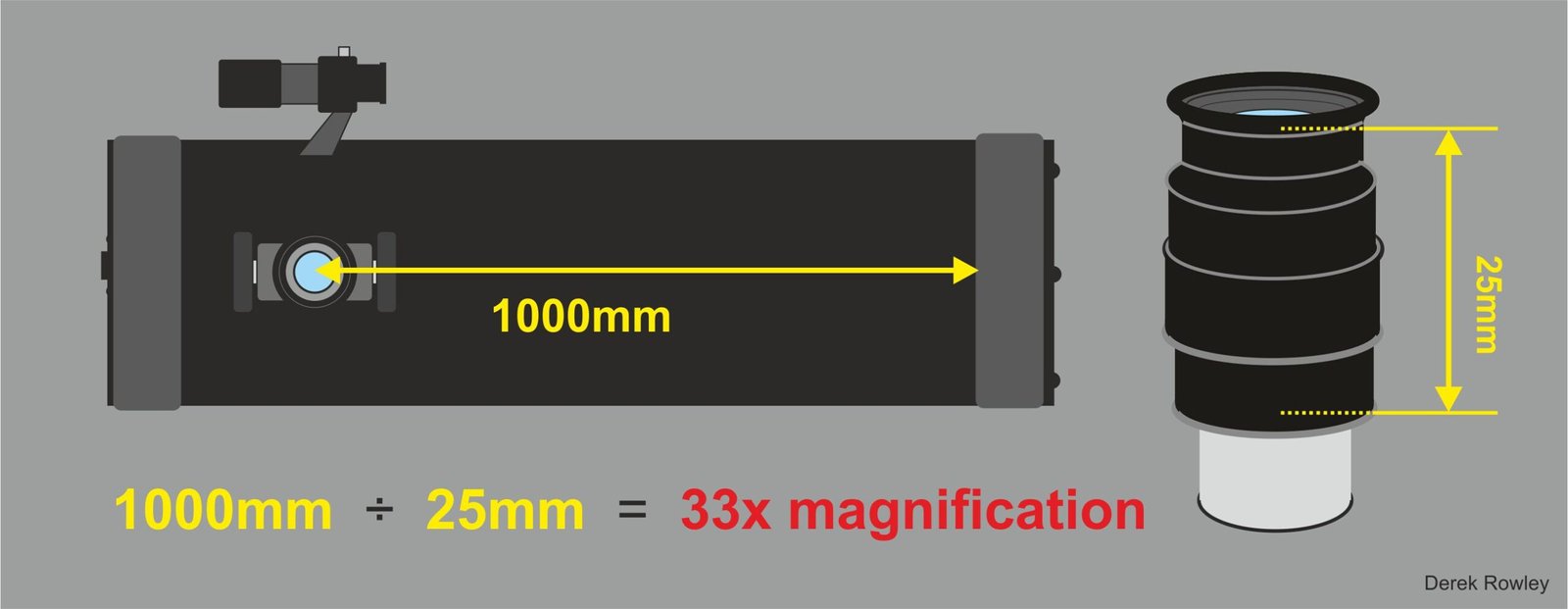
The math is easy division:
- The magnification is the telescope focal length divided by the eyepiece focal length, in millimetres.
O - If you use a telescope of 1000mm focal length with a 25mm eyepiece, the magnification would be 33x.
O
O
For example
Here further below to test all different focal length measurements on the 30mm, 25mm, 13mm eyepiece and all the same 203mm (8 inch) aperture.

oooo
30mm eyepiece
30mm eyepiece
(See in BSL ![]() )
)
o
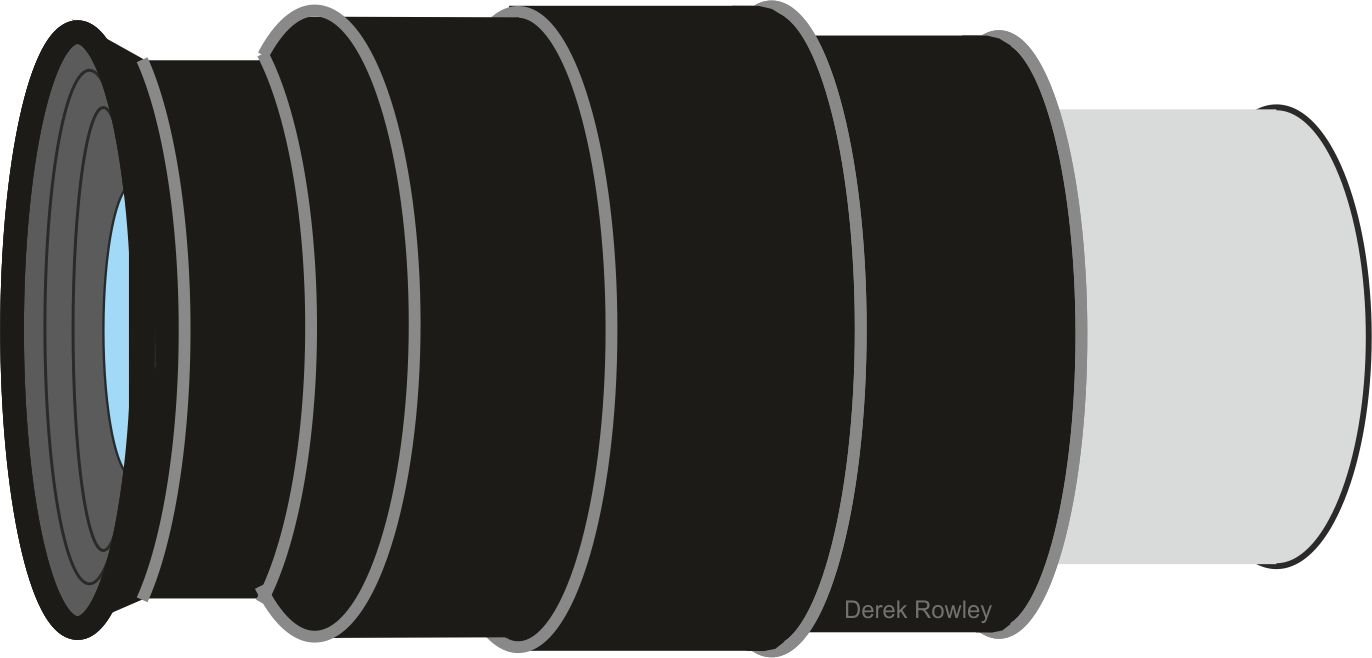
Field of View: 30mm eyepiece
(telescope focal length divided by eyepiece = magnification)
oooo
Aperture
203mm
(8 inch)
o
Eyepiece
30mm
o
Focal length
400mm

13x
magnification
O
Aperture
203mm
(8 inch)
o
Eyepiece
30mm
o
Focal length
1000mm
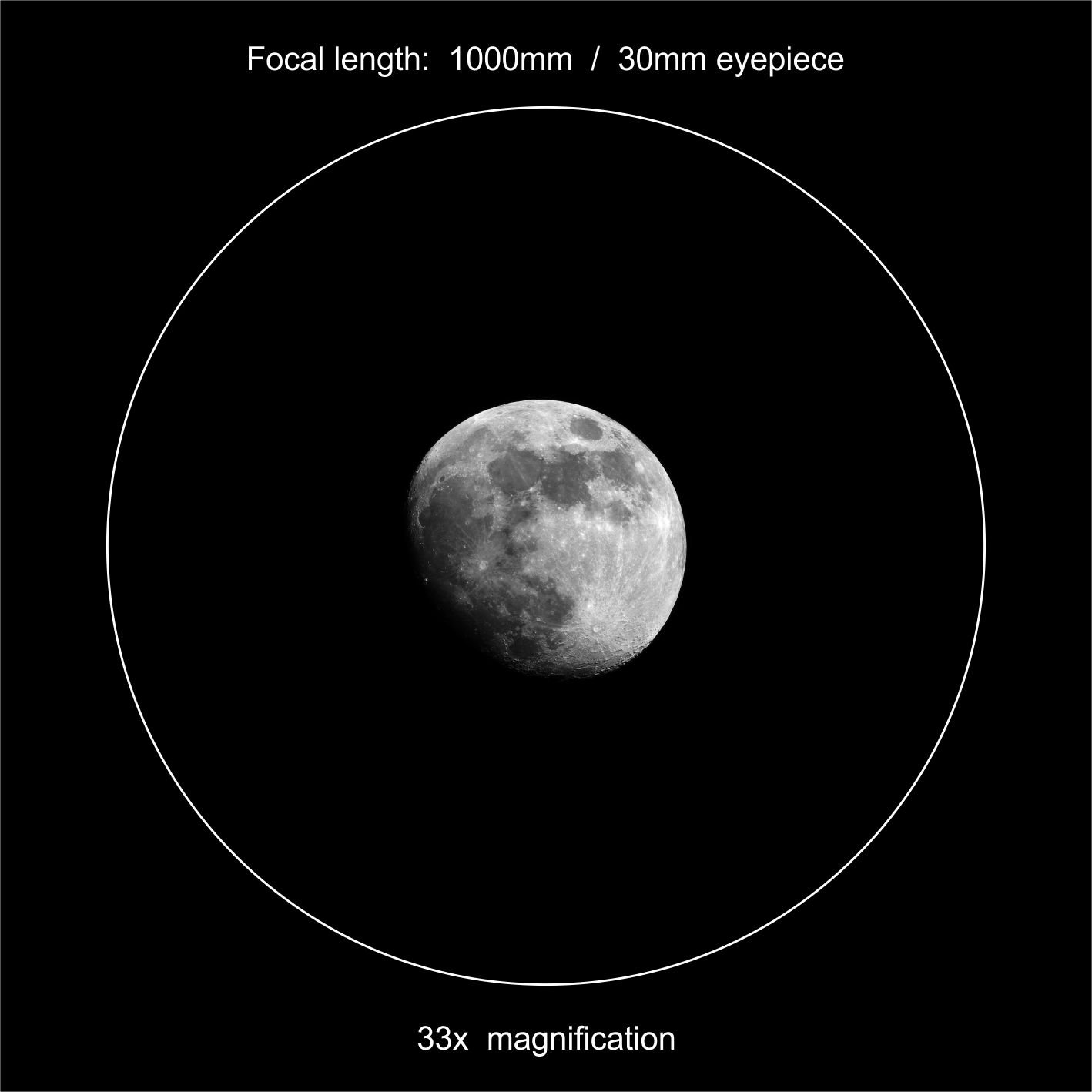
33x
magnification
O
Aperture
203mm
(8 inch)
o
Eyepiece
30mm
o
Focal length
1500mm
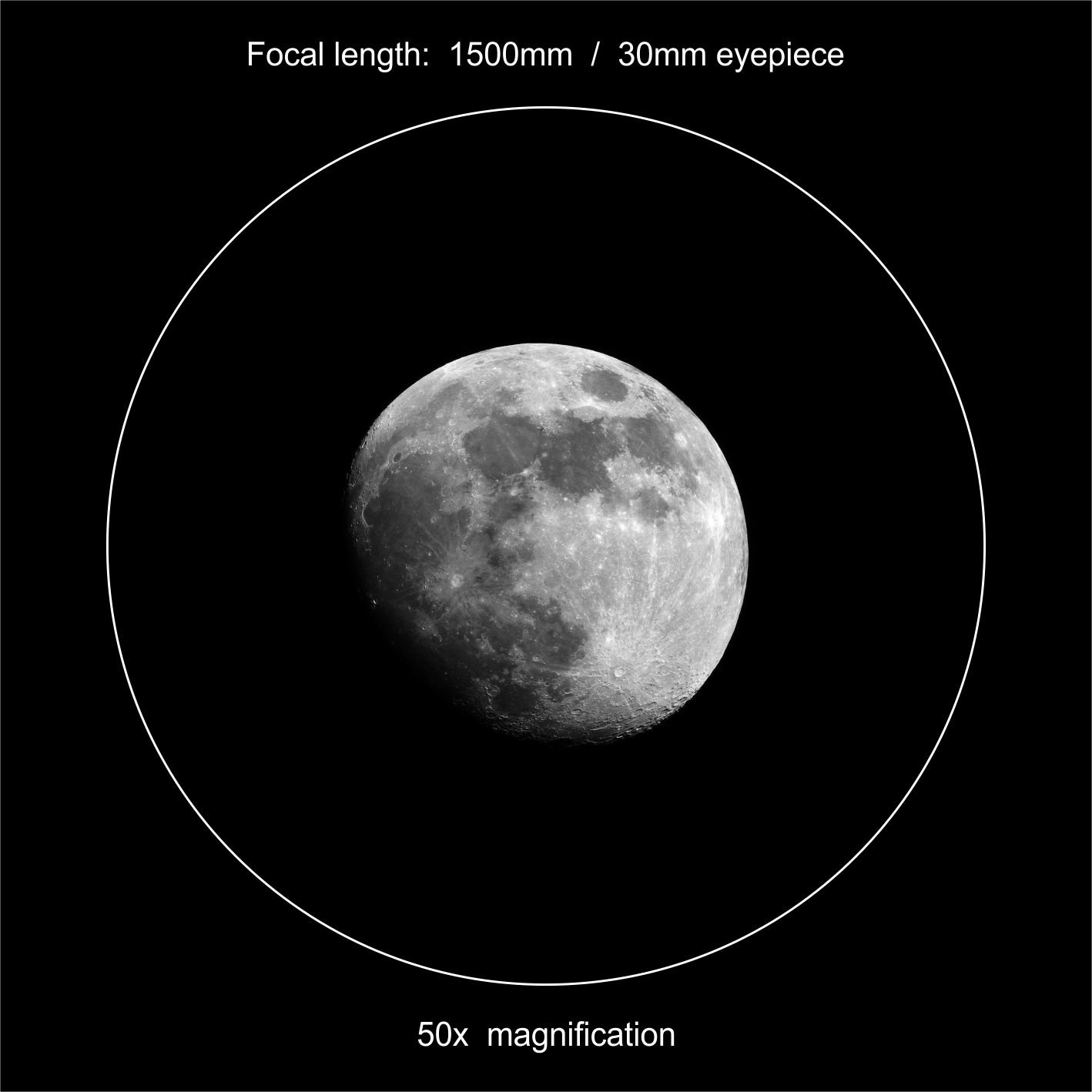
50x
magnification
O
Aperture
203mm
(8 inch)
o
Eyepiece
30mm
o
Focal length
2000mm

67x
magnification
O
Aperture
203mm
(8 inch)
o
Eyepiece
30mm
o
Focal length
2500mm

83x
magnification
O
- 30mm eyepiece (Telescope focal length ÷ eyepiece focal length = magnification)
| telescope focal length | eyepiece focal length | magnification | ||
| 400mm | divide by | 30mm | = | 13x magnification |
| 1000mm | divide by | 30mm | = | 33x magnification |
| 1500mm | divide by | 30mm | = | 50x magnification |
| 2000mm | divide by | 30mm | = | 67x magnification |
| 2500mm | divide by | 30mm | = | 83x magnification |
| . |
oooo
25mm eyepiece
25mm eyepiece
o

Field of View: 25mm eyepiece
(telescope focal length divided by eyepiece = magnification)
oooo
Aperture
203mm
(8 inch)
o
Eyepiece
30mm
o
Focal length
400mm

16x
magnification
O
Aperture
203mm
(8 inch)
o
Eyepiece
25mm
o
Focal length
1000mm
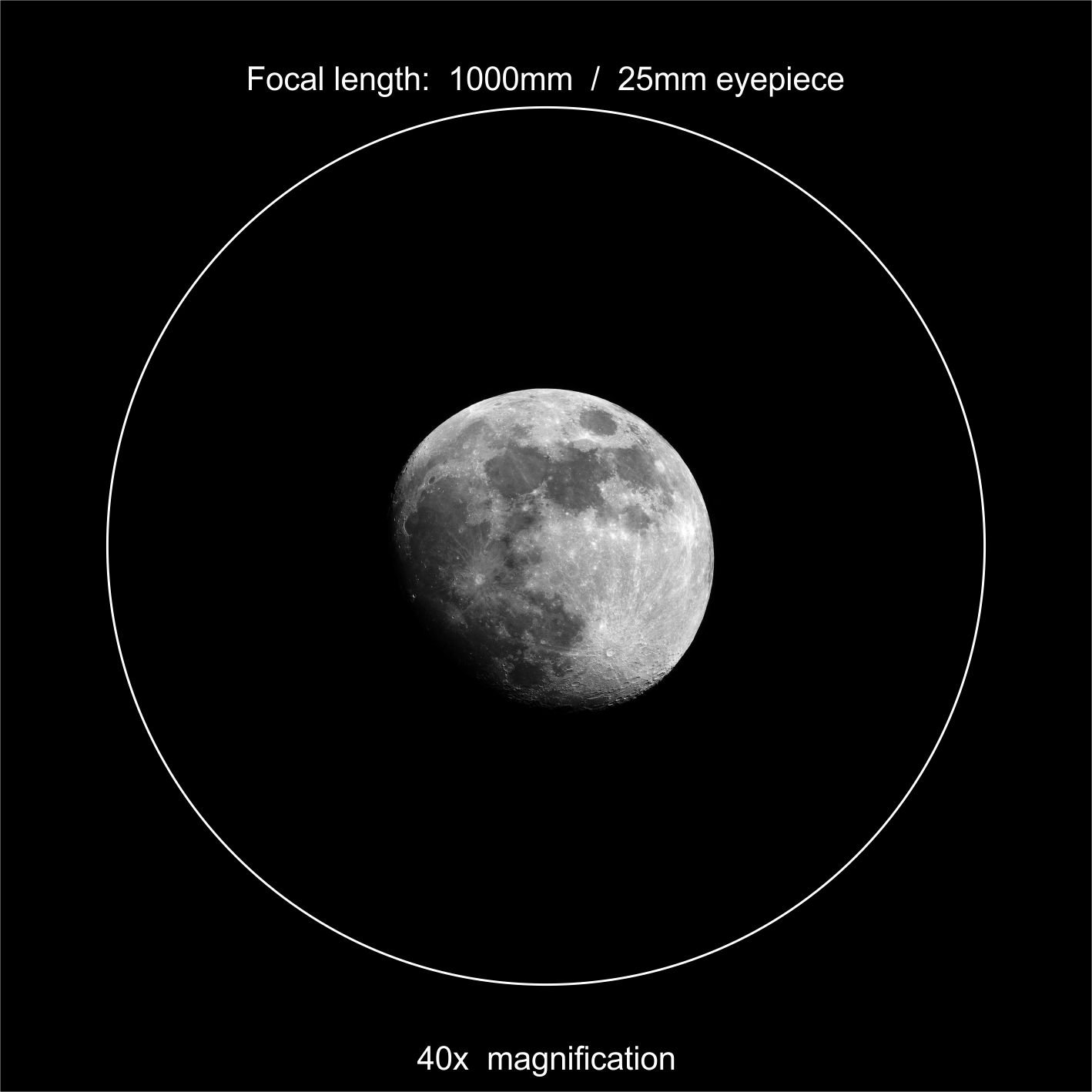
40x
magnification
O
Aperture
203mm
(8 inch)
o
Eyepiece
25mm
o
Focal length
1500mm

60x
magnification
O
Aperture
203mm
(8 inch)
o
Eyepiece
25mm
o
Focal length
2000mm
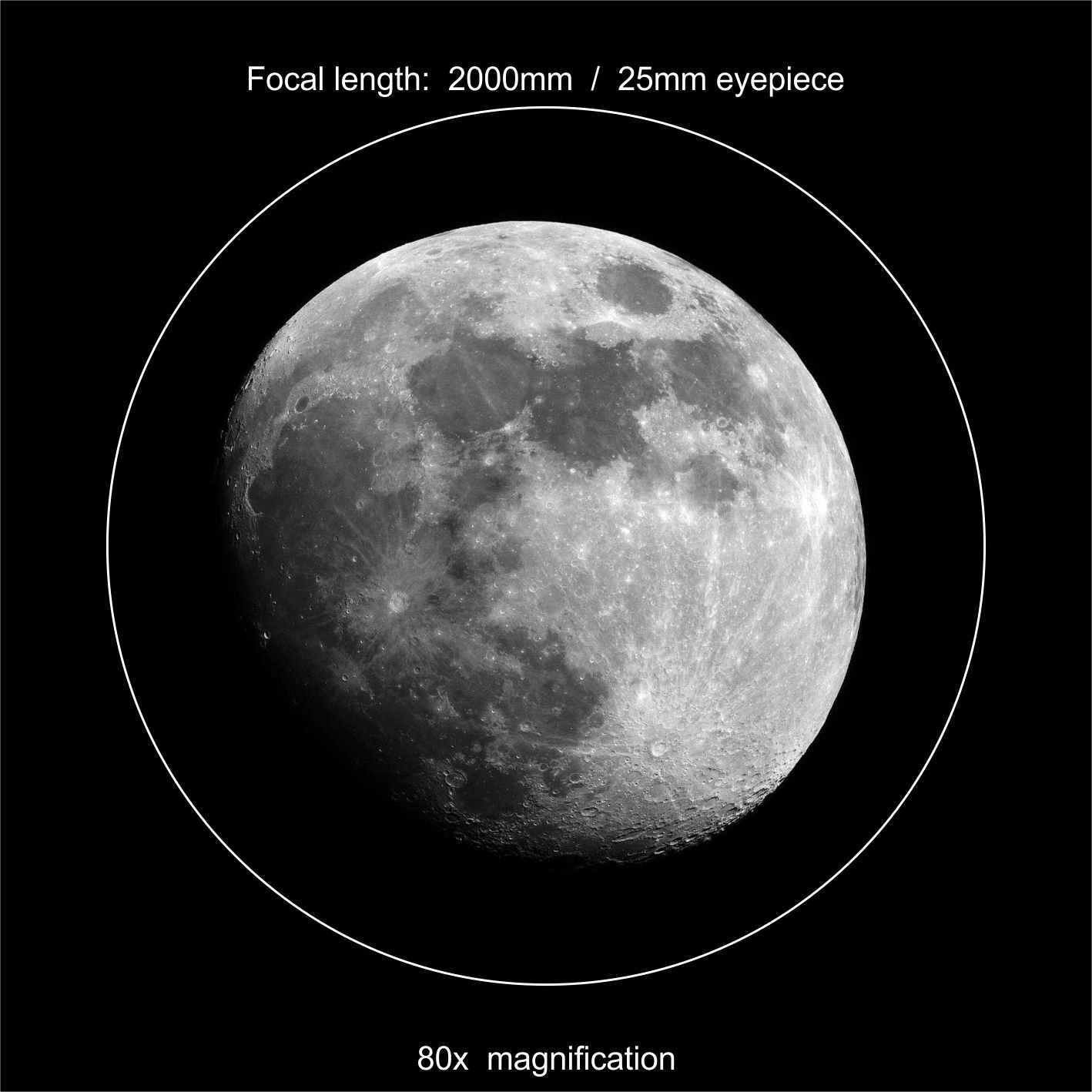
80x
magnification
O
Aperture
203mm
(8 inch)
o
Eyepiece
25mm
o
Focal length
2500mm
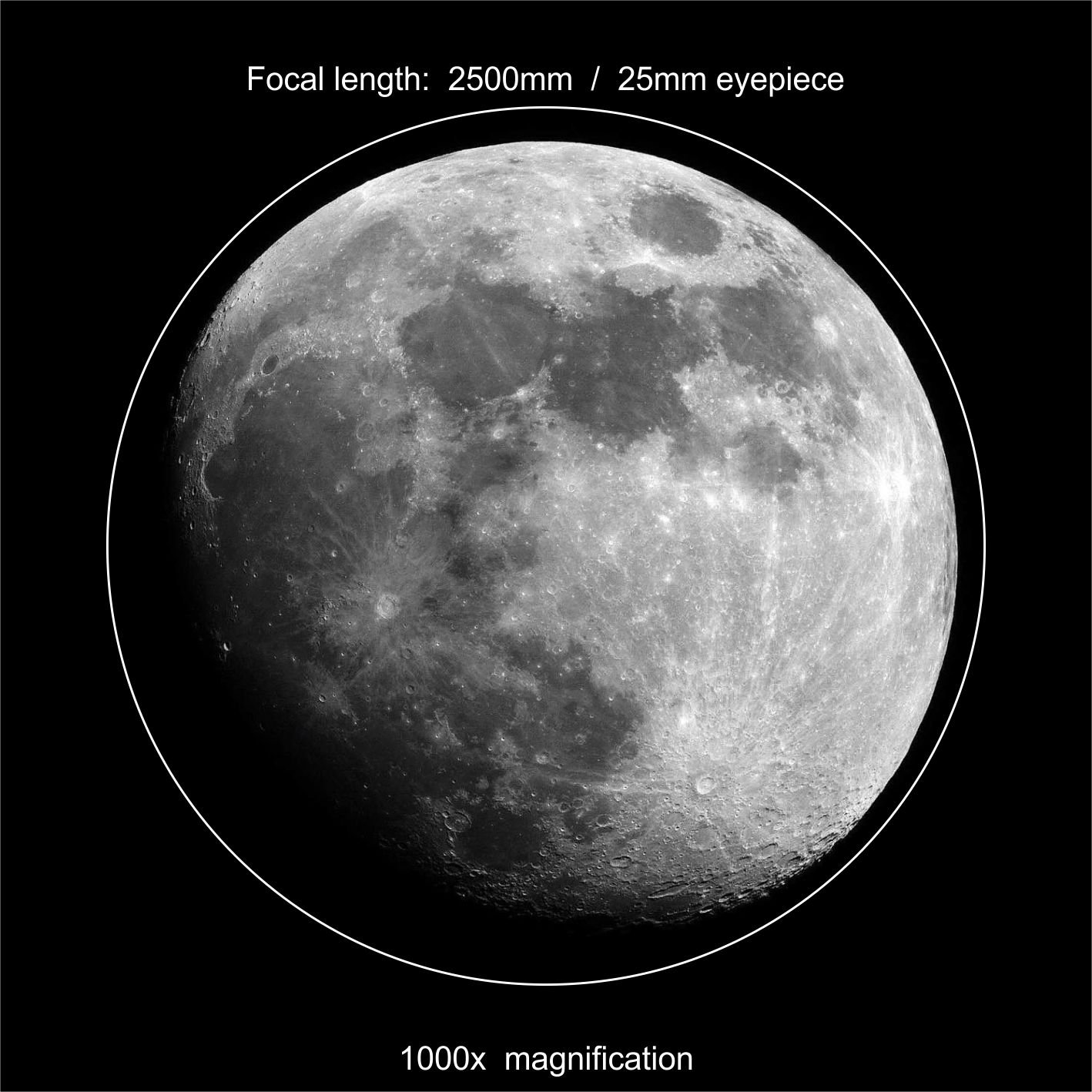
100x
magnification
O
| telescope focal length | eyepiece focal length | magnification | ||
| 400mm | divide by | 25mm | = | 16x magnification |
| 1000mm | divide by | 25mm | = | 40x magnification |
| 1500mm | divide by | 25mm | = | 60x magnification |
| 2000mm | divide by | 25mm | = | 80x magnification |
| 2500mm | divide by | 25mm | = | 100x magnification |
| . |
13mm eyepiece
13mm eyepiece
o

Field of View: 13mm eyepiece
(telescope focal length divided by eyepiece = magnification)
ooo
Aperture
203mm
(8 inch)
o
Eyepiece
13mm
o
Focal length
400mm
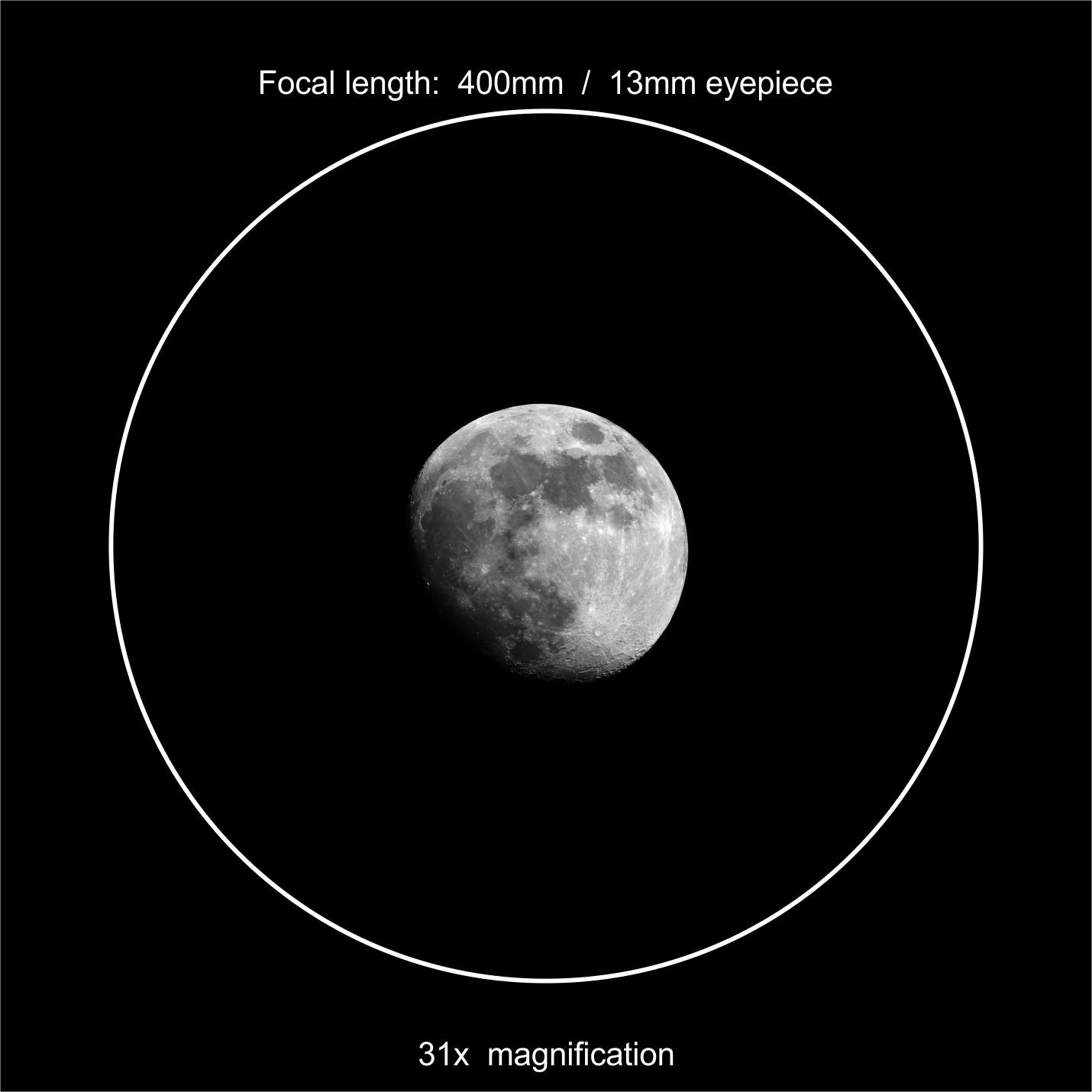
31x
magnification
O
Aperture
203mm
(8 inch)
o
Eyepiece
13mm
o
Focal length
1000mm
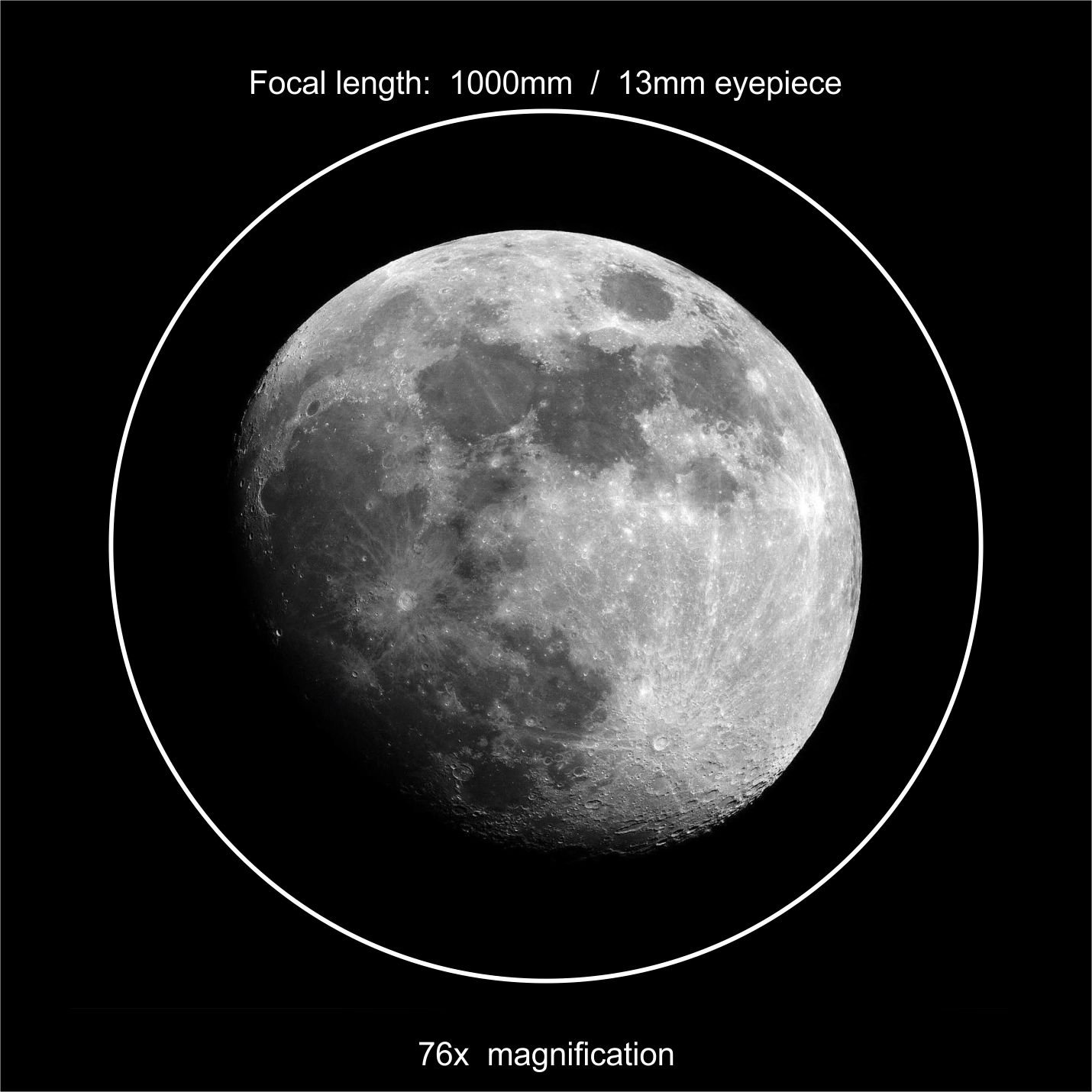
77x
magnification
O
Aperture
203mm
(8 inch)
o
Eyepiece
13mm
o
Focal length
1500mm
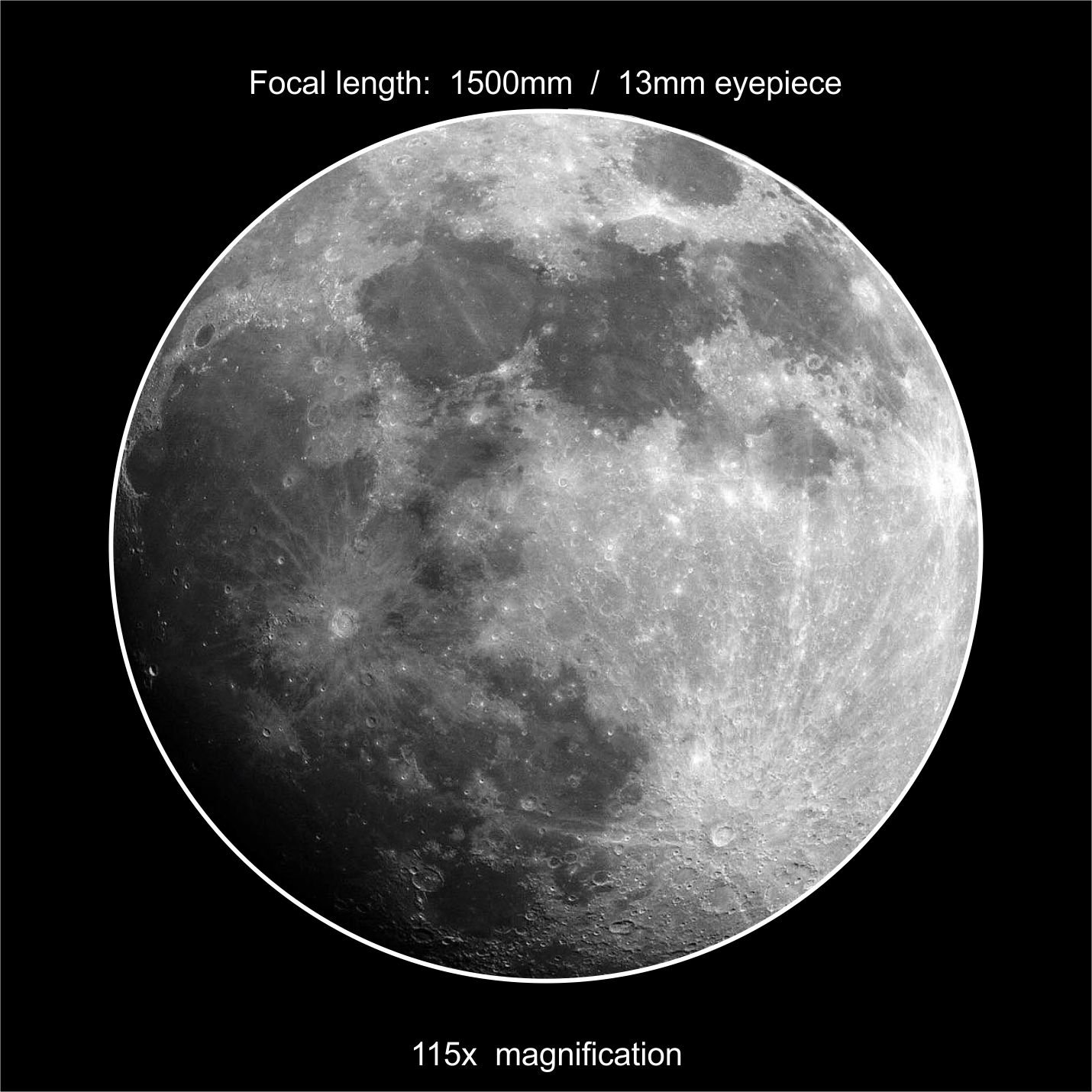
115x
magnification
O
Aperture
203mm
(8 inch)
o
Eyepiece
13mm
o
Focal length
2000mm

154x
magnification
O
Aperture
203mm
(8 inch)
o
Eyepiece
13mm
o
Focal length
2500mm

192x
magnification
O
| telescope focal length | eyepiece focal length | magnification | ||
| 400mm | divide by | 13mm | = | 31x magnification |
| 1000mm | divide by | 13mm | = | 77x magnification |
| 1500mm | divide by | 13mm | = | 115x magnification |
| 2000mm | divide by | 13mm | = | 154x magnification |
| 2500mm | divide by | 13mm | = | 192x magnification |
| . |
OOOO
Comparison chart for your average magnification
Comparison chart for your average magnification

OOOO
(Telescope focal length ÷ eyepiece focal length = magnification)
| Focal length for telescope | Eyepiece 40mm | Eyepiece 30mm | Eyepiece 25mm | Eyepiece 20mm | Eyepiece 15mm | Eyepiece 10mm | Eyepiece 5mm |
| 300mm | 8x | 10x | 12x | 15x | 20x | 30x | 60x |
| 400mm | 10x | 13x | 16x | 20x | 27x | 40x | 80x |
| 500mm | 13x | 17x | 20x | 25x | 33x | 50x | 100x |
| 600mm | 15x | 20x | 24x | 30x | 40x | 60x | 120x |
| 800mm | 20x | 27x | 32x | 40x | 53x | 80x | 160x |
| 900mm | 23x | 30x | 36x | 45x | 60x | 90x | 180x |
| 1000mm | 25x | 33x | 40x | 50x | 67x | 100x | 200x |
| 1100mm | 28x | 37x | 44x | 55x | 73x | 110x | 220x |
| 1200mm | 30x | 40x | 48x | 60x | 80x | 120x | 240x |
| 1500mm | 38x | 50x | 60x | 75x | 100x | 150x | 300x |
| 2000mm | 50x | 67x | 80x | 100x | 133x | 200x | 400x |
| 2500mm | 63x | 83x | 100x | 125x | 167x | 250x | 500x |
Visual Mode: NGC 6888 (Crescent Nebula in Cygnus)
Visual Mode: NGC 6888 (Crescent Nebula in Cygnus)
(Telescope focal length ÷ eyepiece focal length = magnification)

Telescope: 400mm
Eyepieces: 25mm
Magnification: 16x
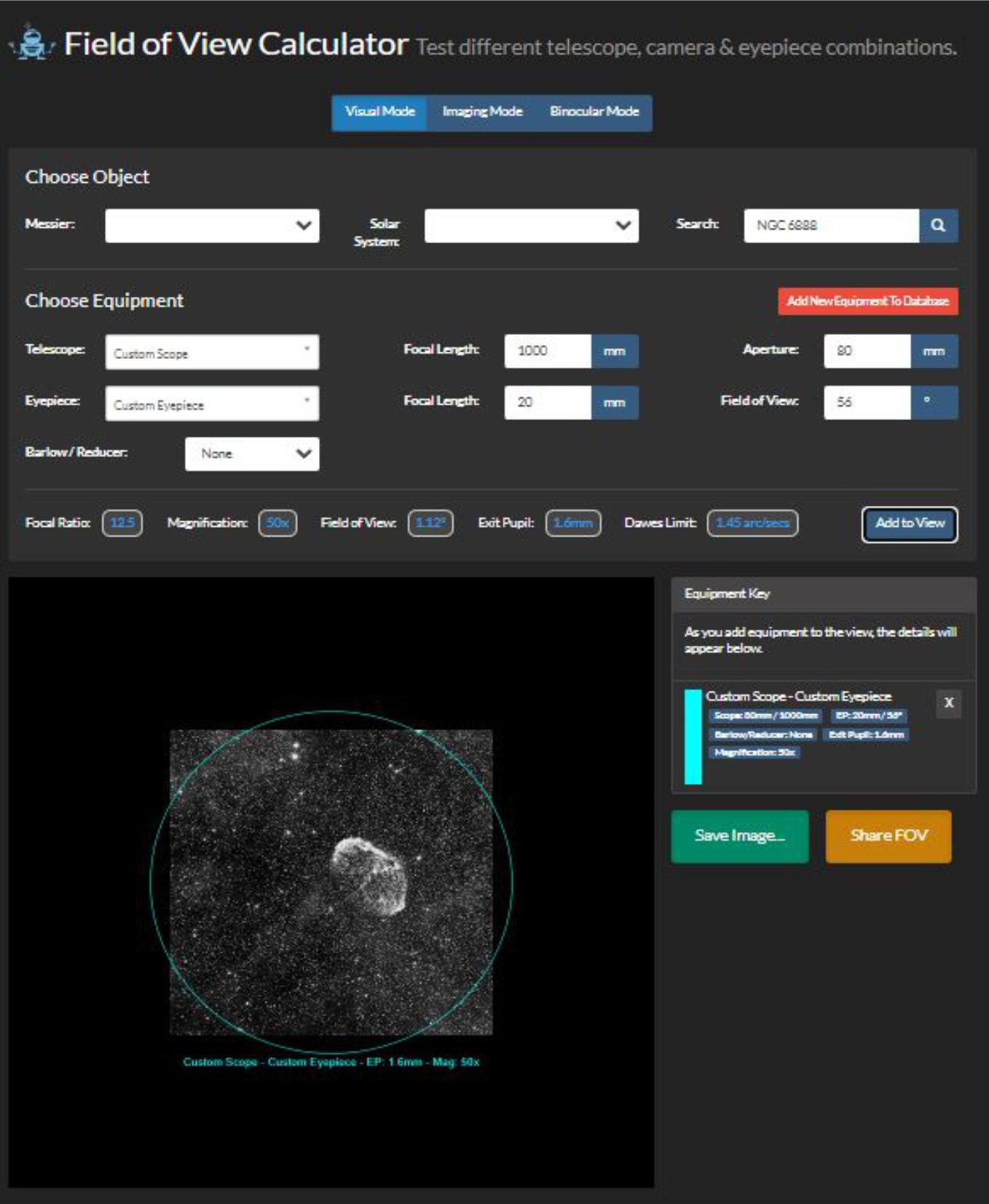
Telescope: 1000mm
Eyepieces: 20mm
Magnification: 50x
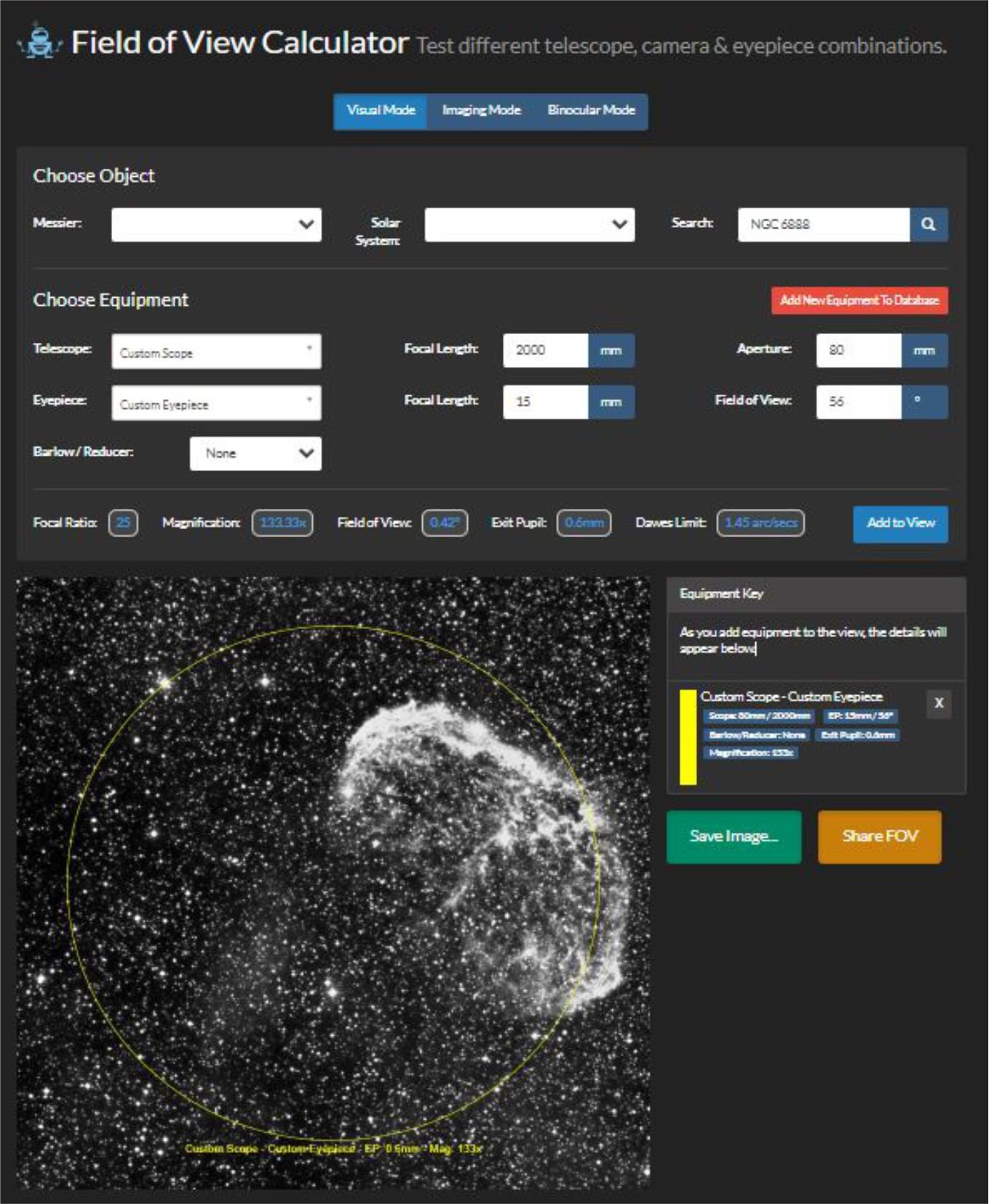
Telescope: 2000mm
Eyepieces: 15mm
Magnification: 133x
oooo
(Source by Astronomytools.com)
Visual Mode: Jupiter
Visual Mode: Jupiter
(Telescope focal length ÷ eyepiece focal length = magnification)
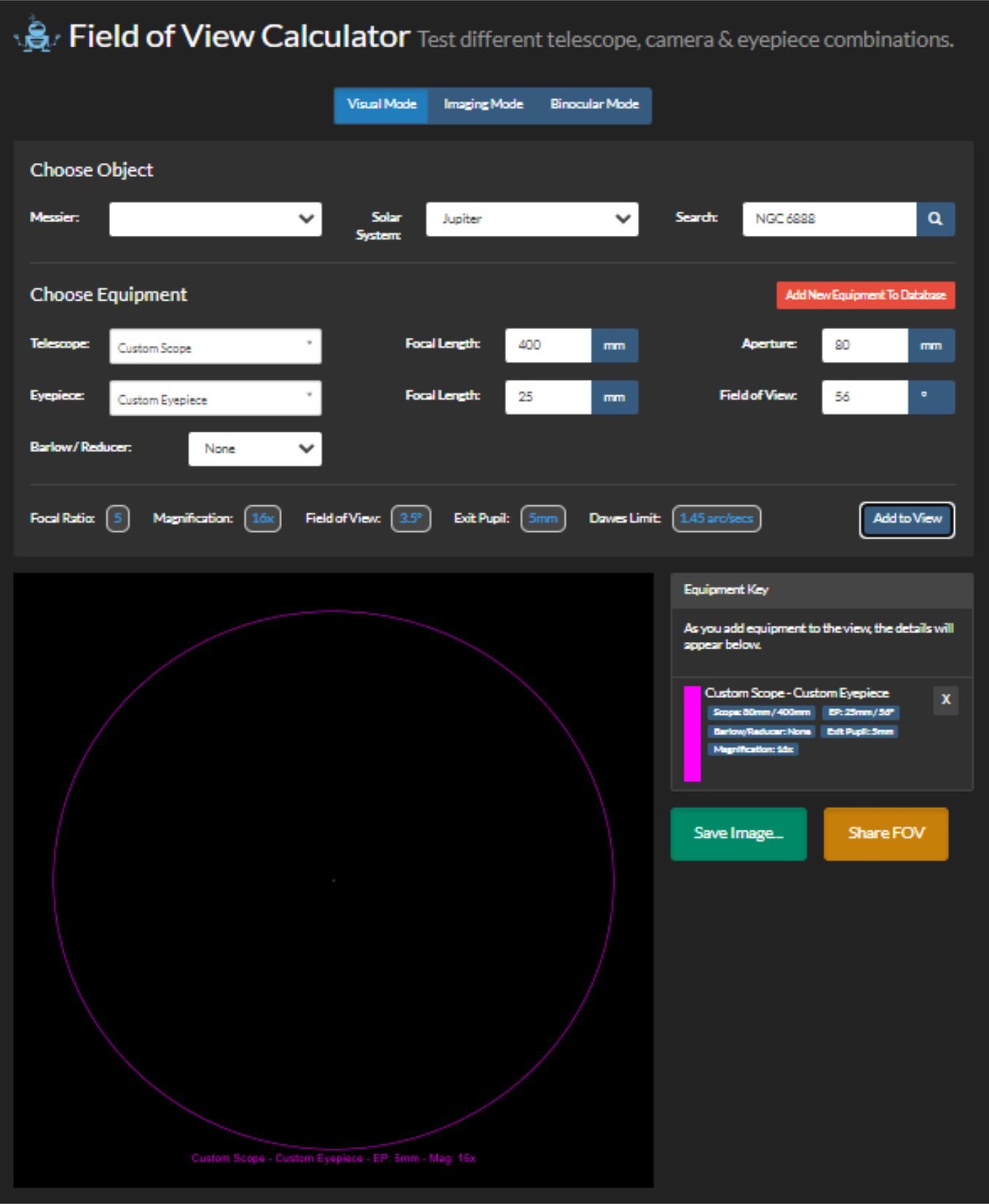
Telescope: 400mm
Eyepieces: 25mm
Magnification: 16x
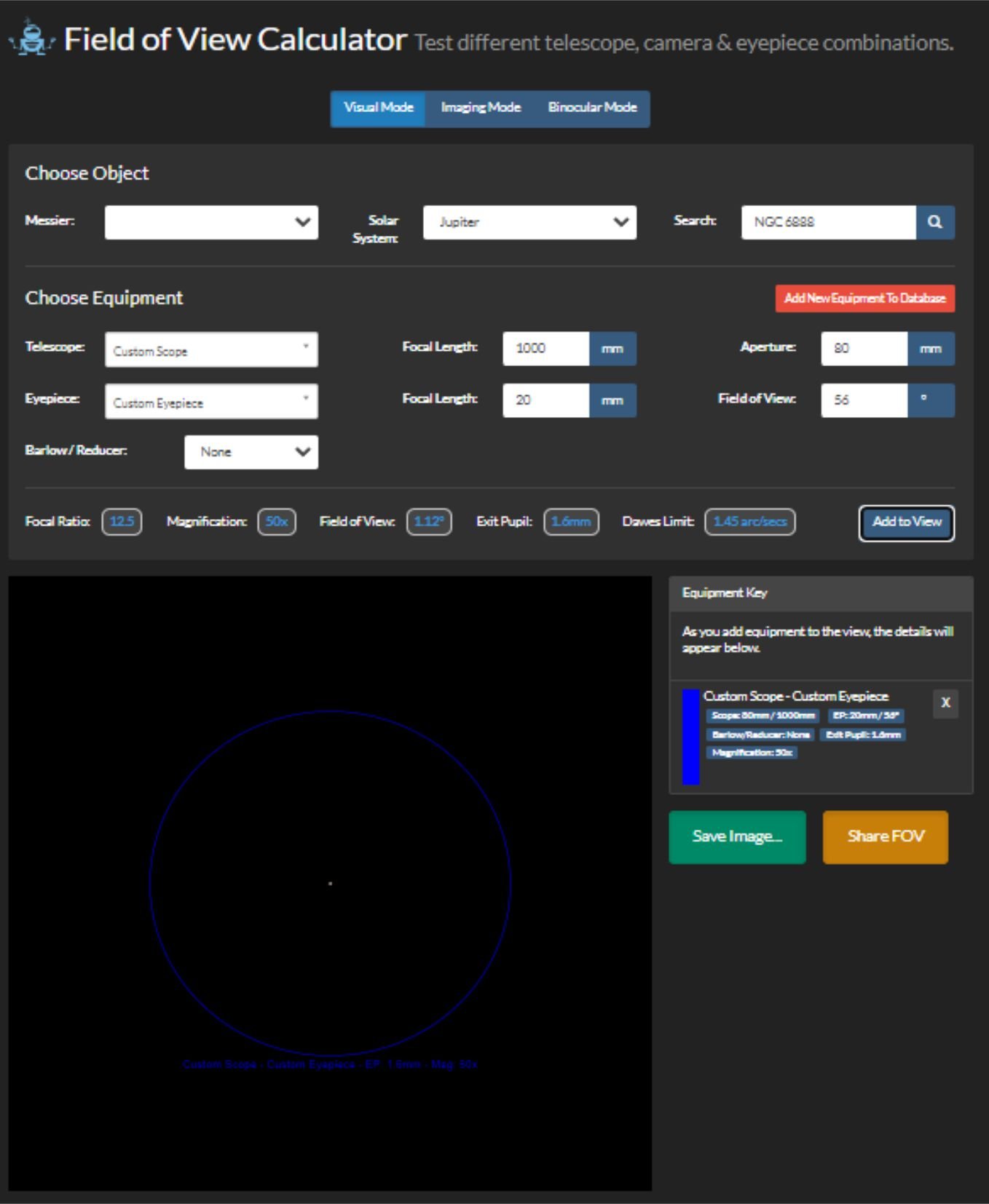
Telescope: 1000mm
Eyepieces: 20mm
Magnification: 50x

Telescope: 2000mm
Eyepieces: 15mm
Magnification: 133x
oooo
(Source by Astronomytools.com)
Visual Mode: Full Moon
Visual Mode: Full Moon
(Telescope focal length ÷ eyepiece focal length = magnification)
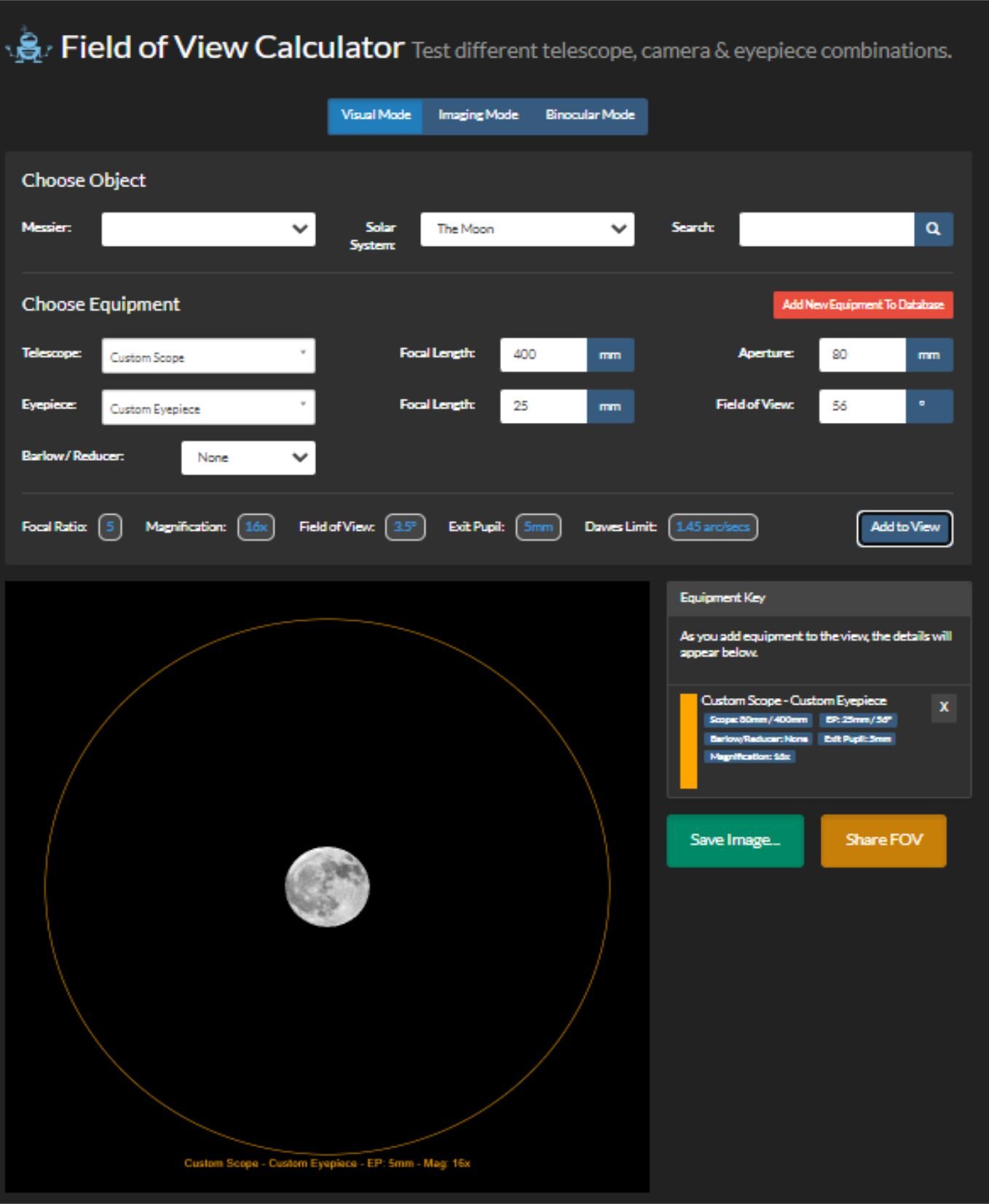
Telescope: 400mm
Eyepieces: 25mm
Magnification: 16x
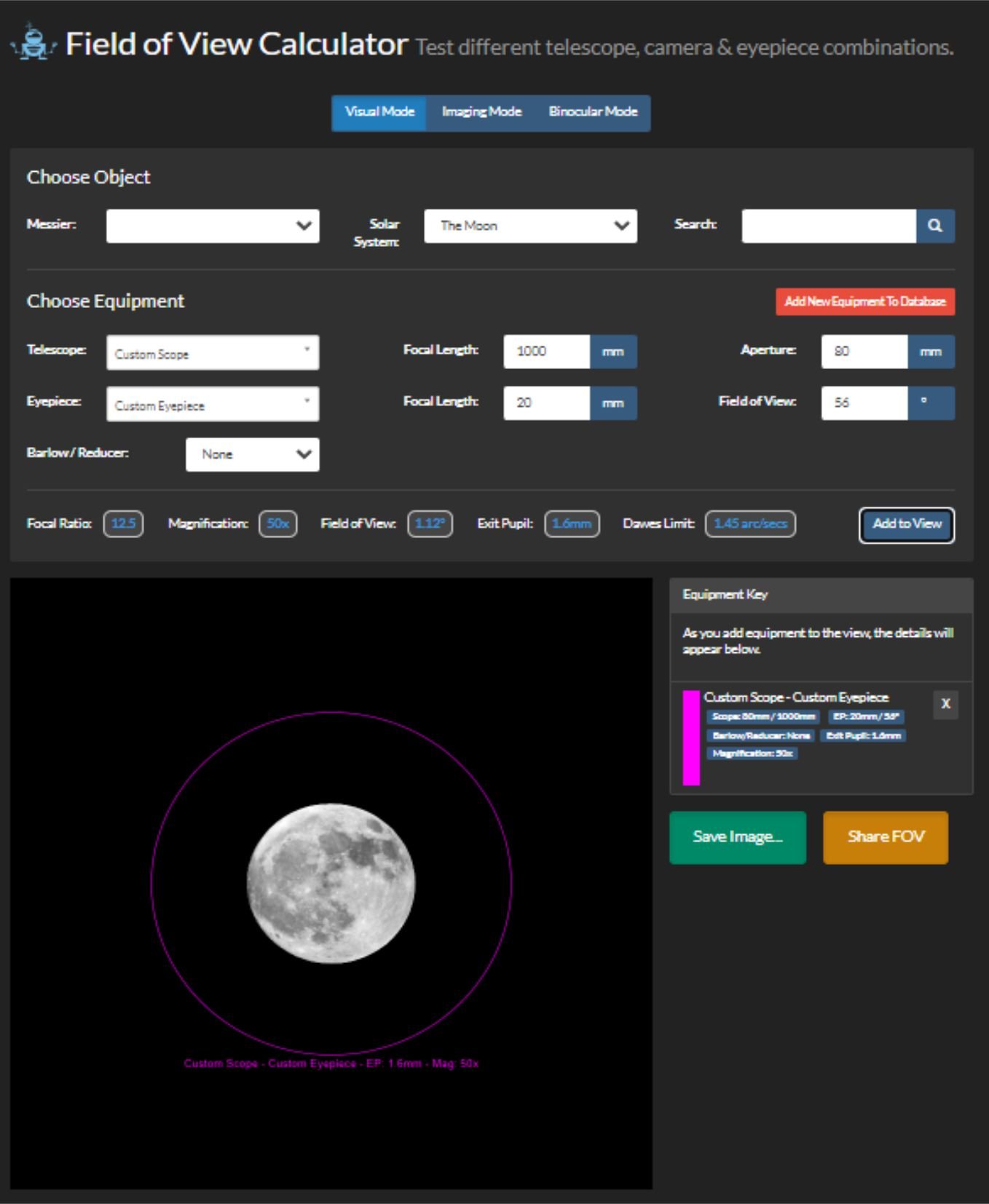
Telescope: 1000mm
Eyepieces: 20mm
Magnification: 50x
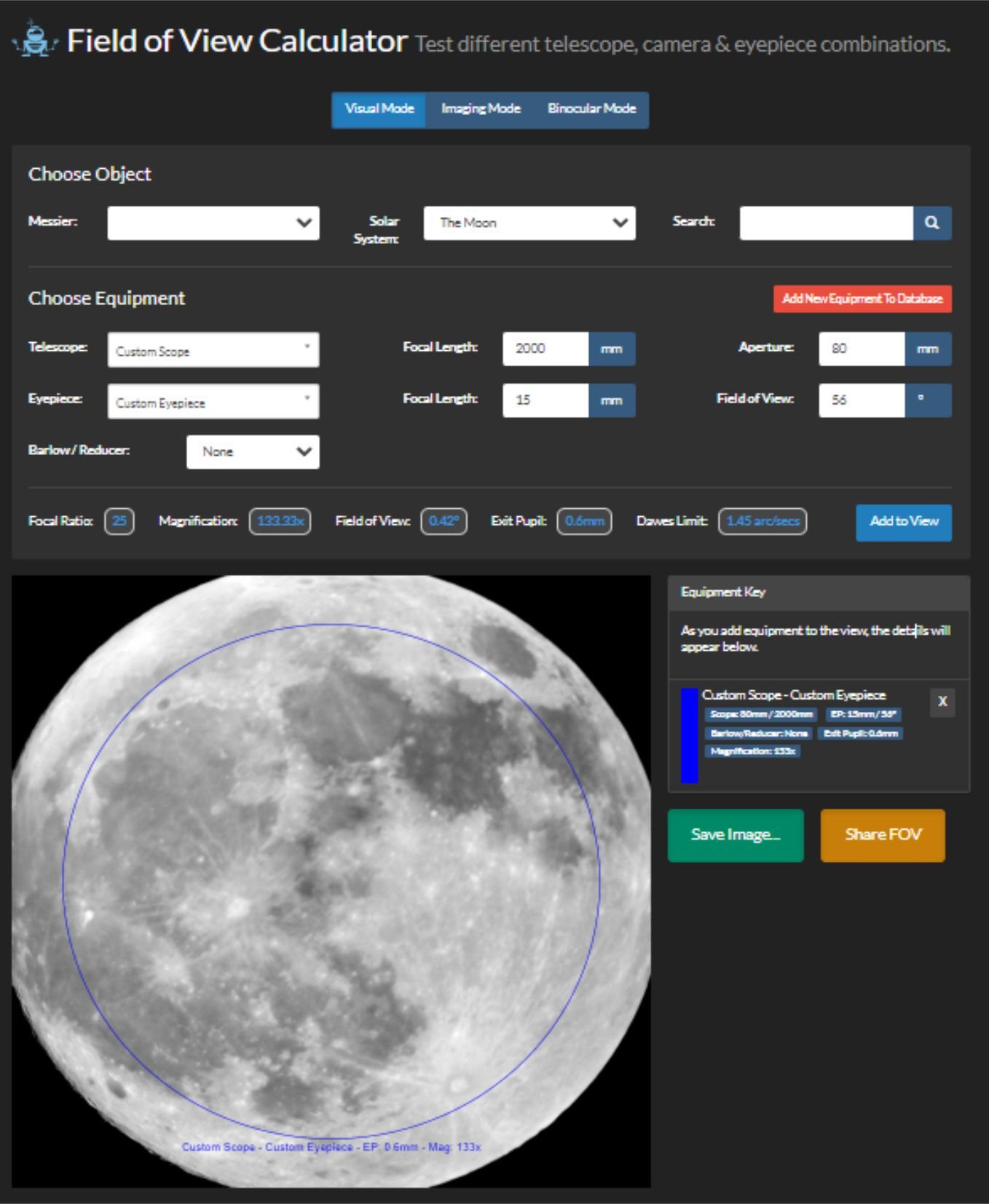
Telescope: 2000mm
Eyepieces: 15mm
Magnification: 133x
oooo
(Source by Astronomytools.com)
Astronomy Tools – Field of View Calculator
Astronomy Tools – Field of View Calculator
o

oooo
Here the link below to help you
testing different combinations of
oooo
telescope
oooo
camera
oooo
eyepiece
oooo
by astronomy tools,
before you decide to buy one.
oooo
oooo
How to read a Focal Ratio
How to read a Focal Ratio
- The focal length divided by the aperture of a mirror or lens gives you the number known as the focal ratio. (f)
o - It is usually written, for example, as f/4, where the focal length is four times longer, f/10, where the focal length is ten times than the aperture.

OOOO
This is the ‘speed‘ of a telescope’s optics, found by dividing the focal length by the aperture.
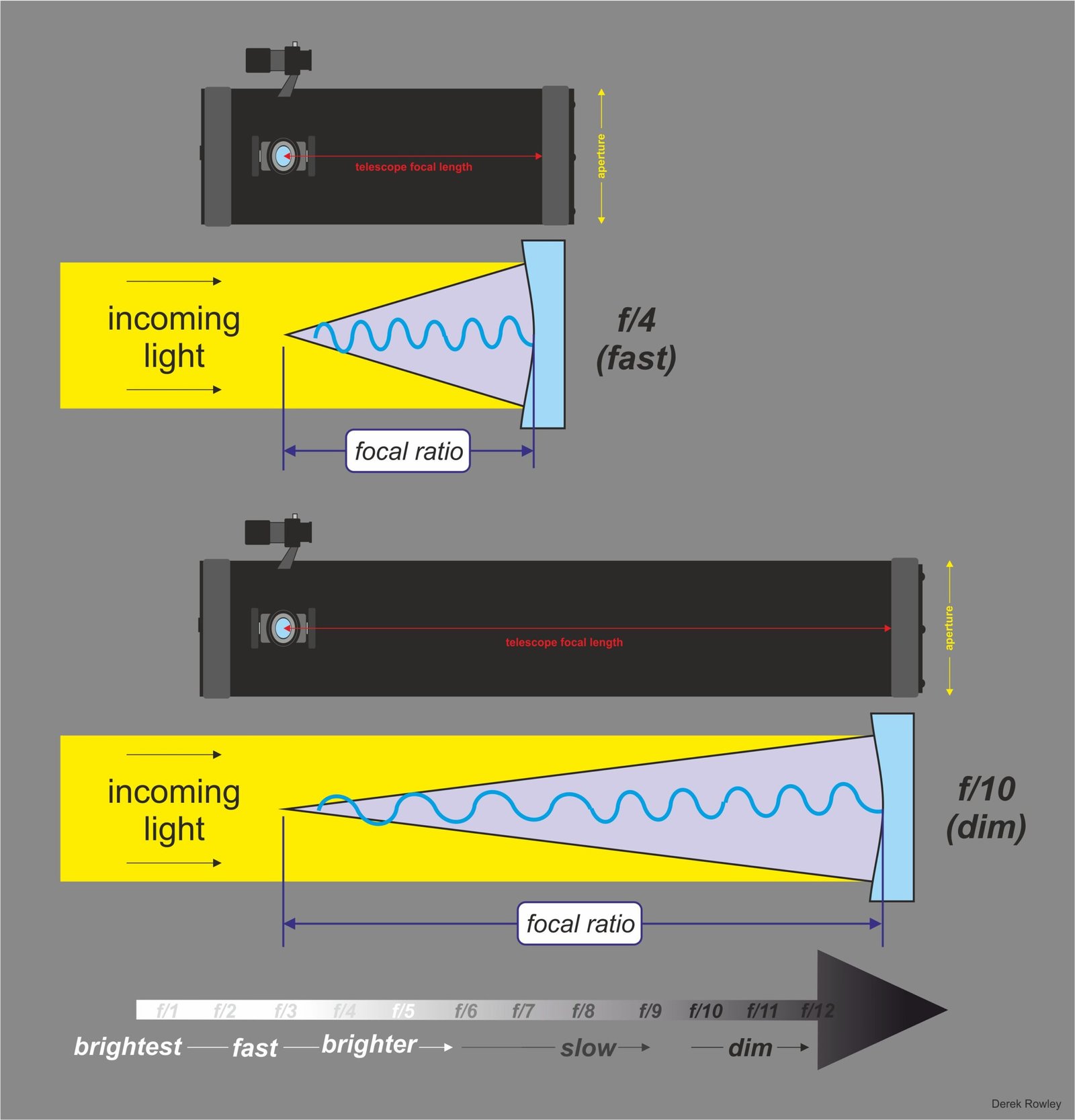
oooo
Focal ratio of f/1 >> f/3
- Generally, anything f/2.8 or lower with a focal length of 20mm or less (the lower the better) is ideal for astrophotography.
- Astro lenses also tend to be bigger and heavier than their standard counterparts due to the size and quality of the glass, which is something to bear in mind if you want to take it on the road.
o
Focal ratio of f/3 >> f/5
- A lower focal ratio (f/5 or below) is often referred to as ‘fast’.
- These telescopes have a wide field of view and produce bright images, making them ideal for deep-sky observations, where you’d want to capture as much light as possible in a shorter amount of time.
- An f/5 system can photograph a nebula or other faint extended deep space object in one-fourth the time of an f/10 system, but the image will be only one-half as large.
- Point sources, such as stars, are recorded based on the aperture, however, rather than the focal ratio – so that the larger the aperture, the fainter the star you can see or photograph, no matter what the focal ratio.
o
Focal ratio of f/6 >> f/10
- For such objects, a focal ratio of f/10 or more is ideal – but if you want to see wide views of star clusters, galaxies, and Milky Way, a lower focal ratio is better.
o
Focal ratio of f/11 >> f/15
- Slow f/11 to f/15 focal ratios are usually better suited to higher power lunar, planetary, and binary star observing and high power photography.
- Medium f/6 to f/10 focal ratios work well with either.
o
oooo
Eyepiece calculator before you buy
Eyepiece calculator before you buy
- How can I choose an eyepiece to buy?
First of all, three things that you have to revise your telescope;
(1) aperture size
(2) focal length
(3) focal ratio
o
o
- Find out in our beginners’ guide
How do eyepieces work, what are the different types and which are the best eyepieces for your telescope?
…..– Find out in our beginners’ guide:- Before you buy eyepieces
OOOO
Telescope Shop
Telescope Shop
OOOO
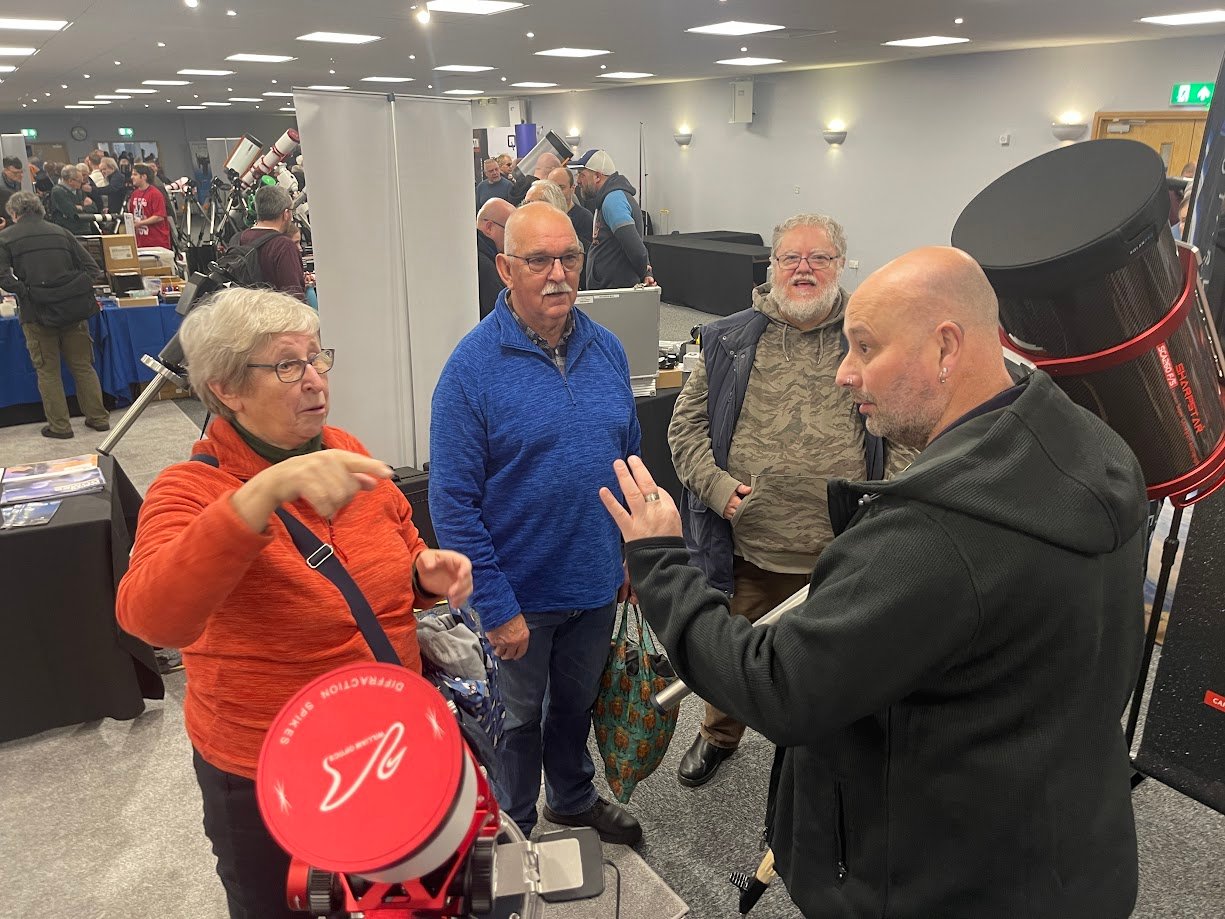
![]()
BSL available
Most Deaf people who use sign language in the UK use BSL. It is a rich combination of hand gestures, facial expressions and body language. Facetime, Derek who can help with it.
oooo
A note from Derek
- Steve at ENS Optical, he’s a friendly experts for astronomy telescopes, binoculars, cameras, astrophotography, bags or cases, accessories, and many more items.
o - great for astronomers to start with it at low budgets.
o - he has also deaf awareness too.
OOOO
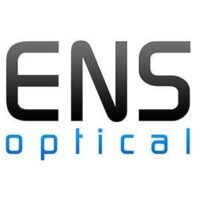
oooo
Website:
ENS optical
o
Email: Contact them
o
Telephone:
0121 382 0928
Text to Steve Asbury:
07593 081684
Facetime / Text:
Derek on 07845 319228
o
Opening Times:
Monday to Friday 10am – 3pm
o
Location:
ENT Optical, 802 Kingsbury Road, Erdington, Birmingham, West Midlands, B24 9PS
O
O
OOOO
Return to
- How do I choose an astronomy telescope? (Aperture)
- What are the 3 main factors that should be considered when choosing a telescope?
- A note from Derek about Dobsonian telescope.
- Size of objective lens for refractor telescopes
- How to read a telescope magnification? (focal length)
- 30mm eyepiece
- 25mm eyepiece
- 13mm eyepiece
- Comparison chart for your average magnification
- Visual Mode: NGC 6888 (Crescent Nebula in Cygnus)
- Visual Mode: Jupiter
- Visual Mode: Full Moon
- Astronomy Tools – Field of View Calculator
- How to read a Focal Ratio
- Eyepiece calculator before you buy
- Telescope Shop
oooo
Go to other pages:
- Newcomers
…….– How can I start in astronomy?
…….– Getting to know the night sky.
…….– Preparing for your night observing.
o - Your First Night Sky (beginners)
…….– Recommend to be first recognisable pattern in your night sky – The Plough.
…….– How to find True North without a compass?
…….– Recognising Pattens by the brightest stars.
o - Derekscope’s Basic Information
…….– In viewing between methods – Naked-Eye/Binoculars/Telescopes
…….– Choosing which binocular to buy?
…….– Choosing which telescope to buy?
…….– Types of telescopes (Refractor / Reflector / Cassegrains)
…….– Before you buy eyepieces.
…….– How to read a telescope magnification?
o - Derekscope’s Observing the Deep Sky
…….– Dark Adaptation, your eyes need!
o
O
Back to homepage:

